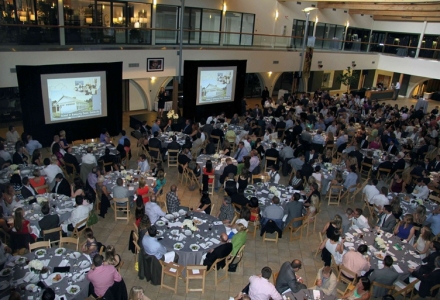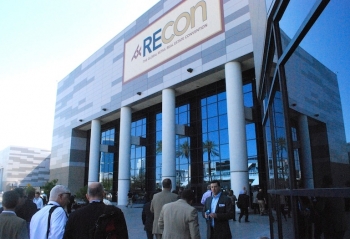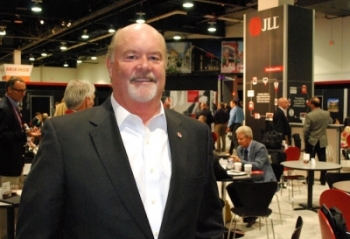|
Creative space has reached buzzword status, and we've heard some varying definitions of what it actually is. Yesterday, for a definitive answer, we assembled some of Seattle's busiest developers at our Seattle Creative Office Summit at the Hyatt Olive 8. Design by itself doesn't make space creative, our 200 attendees heard. The people who inhabit the space do. And now 30% of the workforce identifies as mobile workers, either as part of the creative class or as an employee working remotely. (The other 70% of the workforce just realized why the line is always so short in the cafeteria.) Moreover, a CEO doesn't say, "Today we'll have creative office." Executives are noticing a groundswell, and they're scrambling to learn what it's all about. Above, we snapped Dunn + Hobbes principal Liz Dunn and WeWork Seattle lead Gina Phillips. Office space needs to acknowledge the human side of the people who work there to foster their work-related creativity, the panelists explain. Employees, for instance, want accessible amenities, both within their space and in the nearby neighborhood. It isn't work versus life anymore—it's work and life, and creative office space supports both with its flexibility. Also among our panelists: Lake Union Partners principal Pat Foley and Graham Baba principal Jim Graham, with Liz. Creative space as a place that encourages people to collaborate in a way they might not in a standard office, they say. It allows flexibility about where you sit and how you work. Also, younger generation workers want walkable locations. Even large tech campuses in Northern California are trying to imitate that kind of urban environment, some more successfully than others. Regus regional VP Sande Golgart and True Fabrications co-founder Dhruv Agarwal. The first creative office spaces were adapted from other uses, so creative office is fundamentally adaptive space, the panelists say. The physical environment is just now catching up with 30 years of tech development that allows flexibility in the work space. Open office space isn't new, but embedding everyone in that kind of space is a new approach. Gina with Impact Hub Seattle CEO Brian Howe. Creative office space has to be occupied by people who will thrive in that setting, the panel continues, which is largely but not completely open in character. That openness is important: it helps a company process information more quickly, because people meet more easily. At the pace of business today, that's no small consideration, and so creative space can offer companies a competitive advantage. Here's MBI's Jay Harmeyer, who moderated (with considerable gesticulation, we might add). Creative space fosters an environment where people want to come to work, the panel says. The days of the closed offices are going away, and not just for tech or traditional creative users, such as architects. But there will always be some need for private spaces (otherwise office-wide games of manhunt are boring), at least for temporary use. |
|
 |
 |
Construction for Change!We tested out the picture-taking Bisnow drone last week at Construction for Change's sixth annual banquet at the Seattle Design Center, which was a smashing success. This year, CfC is building a health center with Partners in Health to provide HIV/AIDS treatment and other crucial health services in Nsambe, Malawi. |
 |
What We Heard at ICSC This Week |
||
 The retail industry was rocking the Strip this week for the 38th annual ICSC RECon, and Bisnow reporters were live on the scene to bring you the latest. (Unless we slept late, what with all the parties.) What happened in Vegas this week will surely not stay in Vegas. The 40,000 retail pros in attendance were on a mission to bring back new deals. Buzzwords on the floor this year were growth and expansion, and while many we'd asked were cautiously watching this fall's election, it didn't stop them from crowding the 1,000 booths in search of transactions. |
 The rise of e-commerce and the fall of the US economy led to fewer retail deals over the past five years, JLL Americas Retail chief Greg Maloney told us. But with the economy back to pre-recession levels, retail deals are starting to close in big waves, especially around hot job growth markets on the coasts. Bricks-and-mortar stores are more resilient than even the harshest critics thought, he says, since there's nothing like an in-person experience. Increased activity is also causing retail owners to rethink existing properties, adds Cushman & Wakefield Americas retail head Matt Winn, by adding unique uses like healthcare and newer, local concepts. |
|
 |





